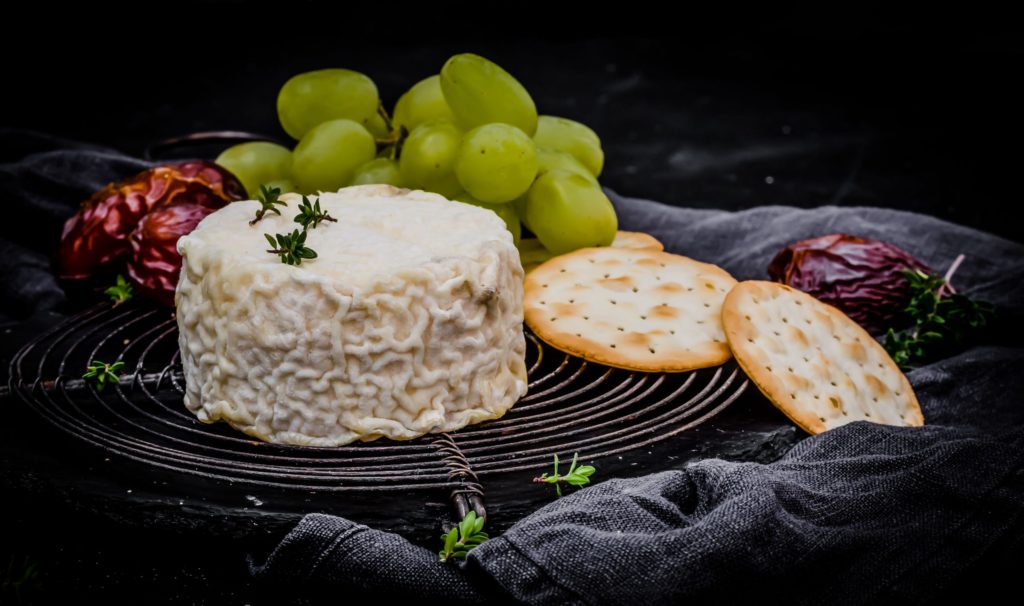Growing demand for Australian cheese
While Australia has always had a thriving dairy industry, we’ve traditionally imported cheeses. But that’s all changing, as consumers who want to support local farmers and producers realise award-winning Australian cheese is made on their doorstep.
La Luna’s Holy Goat cheese rivals any goat’s cheese that comes out of France. Pecora Dairy is producing raw milk cheese. Burraduc Farm has a herd of buffalo to provide fresh milk for luscious buffalo mozzarella balls that have Neapolitan pizzaiolos dreaming of home.
Research from Dairy Australia confirms Australians are big on cheese. We eat 13.5kg per capita each year. By buying local, we’re supporting farmers and cheesemongers who’ve had to contend with bushfires and the impact of COVID. As Sam Penny from Cheese Therapy told Eativity back in June, the demand for Australian cheese has exceeded expectations.
“What we thought was a COVID trend hasn’t slowed down,” he says. “Since then, we’ve had to open distribution in Geelong to be closer to the source and produce fewer food miles.
“We’ve been able to shorten the time it takes cheese to get from a cheesemaker’s to a person’s home, so that when it arrives the cheese is ripe. Supermarkets need six to eight weeks on a cheese, so it’s very unripe. But we can cut out all of that shelf time so that cheese arrives tasting exactly how the cheesemaker wants it to.”

Cheese delivery boxes aren’t a one-off trend. In March, COVID forced the MOULD cheese festival in Brisbane to be postponed just five days before it was due to start. This left organiser Dan Sims with a problem. He had 3000 people scheduled to attend, and he was left with 1.5 tonnes of product that had already been made. “We asked ourselves, how do we help them sell this cheese, with restaurants shutting down?” he recalls.
So he shipped out curated cheese boxes. They proved so popular that a new business was born: Mould Cheese Collective.
“COVID came along when Australia was already primed to support local,” he says. “And Australian cheese has never been better. The response has been fantastic and it’s growing every month. It’s not about competing with cheese from France or about who makes the best French-style cheese. It’s about celebrating what we have here at home.”

It’s easy to stick to brie, blue and cheddar. But there’s a whole range of flavours to be discovered. Local producers are making everything from semi-hard cheese coated in gin botanicals and fresh cow’s milk curds wrapped in vine leaves to Italian-style scamorza.
As our tastebuds become more adventurous, demand for these specialty cheeses has increased. Three decades ago, they made up around 30 percent of total production volume. However, in recent years, this has climbed to 45 to 50 percent.
Home cooks are also upping their cheese game. During lockdown, chef Jo Barrett from Oakridge Wines in Victoria launched Have A Go magazine. The first issue was dedicated to making feta. Cheesemaker Kristen Allen has been teaching cheese workshops since 2012. They were popular from day one and demand has steadily grown.
“I realised there were no workshops for people who wanted to learn,” she says. “So I started. This is stuff we should be making at home. It’s easy, but not many know how.”
Allen teaches people how to make everything from a fresh curd and halloumi that’s ripe for pan-frying to a creamy burrata begging to be split open. And she believes the secret to great cheese is simple. “Really good milk; it’s the main ingredient,” she says.

This is a sentiment with which chef Matt Moran agrees. “With the combination of top-quality fresh milk and cultural influences from around the world, Australia is uniquely positioned to produce some of the most varied, high-quality cheese in the world,” he says. “As Australians, we’re so lucky to have a fantastic range of dairy produce on our doorstep.
“Whether it’s a trip to your favourite cheesemonger, a farmer’s market or even your local grocer, there are so many delicious Aussie cheeses to choose from. It’s so important to show our support for Australian producers who have really been doing it tough.”
How to create the perfect cheeseboard
1. For presentation, stick to odd numbers and choose different shapes and colours.
2. Flavour-wise, you want a mix of subtle and strong, plus different textures. Think white mould, washed rind, blue, cheddar, semi-hard and hard styles.
3. To best appreciate the flavours and textures, serve cheese at room temperature rather than straight from the fridge. Also, pay attention to the best-before date. That’s when the cheese will be ripe and offer the best flavour.
4. Use a different knife for each cheese, so you don’t muddy the flavours.
5. Sides matter, whether it’s strawberries, quince paste or honey. Choose accompaniments that will either complement or contrast the cheese (see below).
6. Generosity is key, so don’t skimp on servings. For pre-dinner drinks allow 50–100g per person. If you’re skipping the main and just having cheese, go for 150–250g per person.

Perfect match
If you’ve bought a beautiful Australian cheese, serve it with sides that’ll make it shine:
Ricotta: serve with dukkah and extra virgin olive oil
Raclette: serve with potato chips and pickles
Blue cheese: serve with small squares of dark chocolate
Washed rind: serve with honey and fennel seeds
Cheddar: serve with thin slices of fruit cake
Burrata: serve with fresh figs and pomegranate molasses
Want more information? Dairy Australia has created Cheese Please. It’s a guide to choosing, storing, serving and matching the best Australian cheese.









